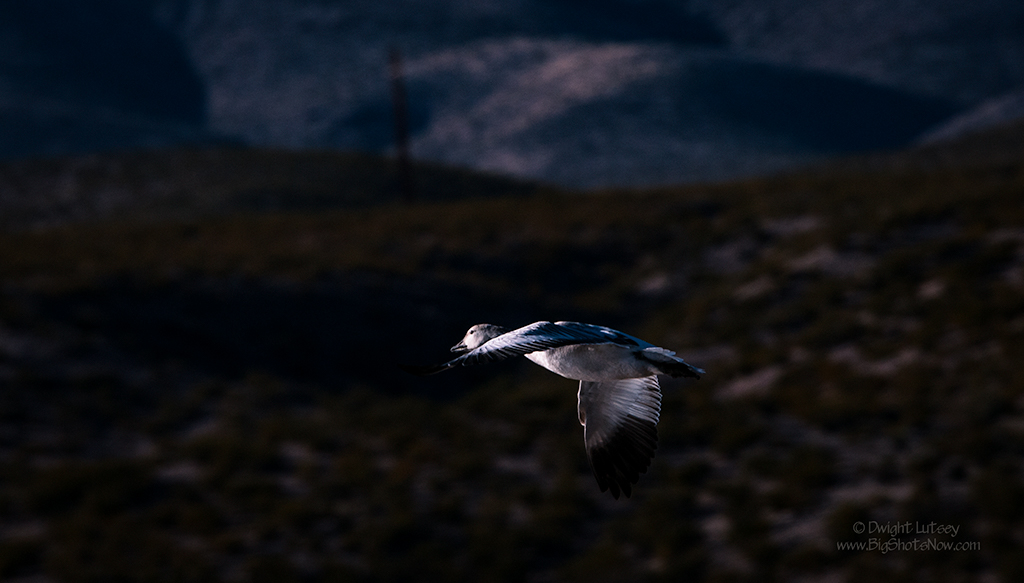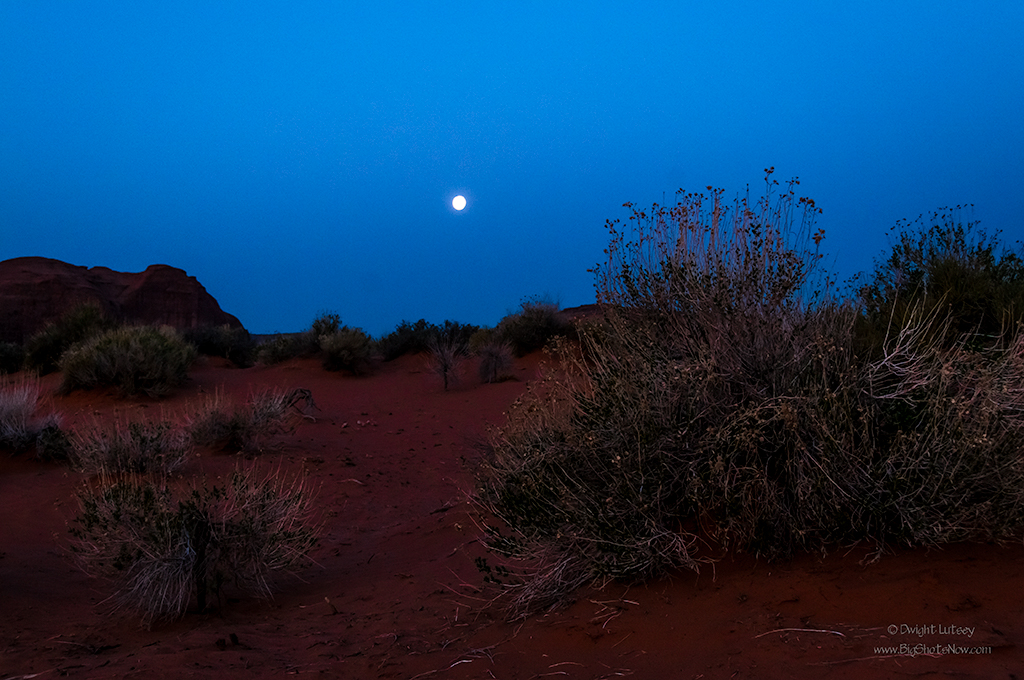It was a brisk frosty morning at Bosque del Apache when the sun got to the point where the Snow geese began to rise up into the air and head for their feeding grounds. Brisk was nearly a misnomer as brisk was about 27-28 degrees with a wind coming out of the Southeast at about 25 miles per hour. This probably felt like a mild spring day for the Snow geese but it felt pretty damn brisk for the photographers. Hiking or jogging or moving quickly in these conditions lessened the feeling of being cold, but standing in one place not moving, waiting for the action to start so you could go to work, was what some might call a miserable experience.
They say that you need to dress for the cold in order to be comfortable in conditions like this. Wearing both your 800 count down coats, and sorrels stuffed with heating pads and a hat a Russian would be proud to wear, made it just possible to stand out there for the two or three hours needed to catch the morning flight schedule of the Snow geese and the Sandhill cranes. Drinking several thermos’ of boiling hot tea helped a little. There was many a longing glance cast back at the vehicle with its heater and the promise of warmth, but the deal was you needed to stand there because even if you so much as looked away at the wrong moment you could miss the shot of the trip. Yes we know there is a certain amount of masochism involved in this profession. Yes we know we brought this on ourselves, yes we know that all you had to do was turn around and walk back to the truck and this would all be over. But that would be like a Seal candidate ringing the bell. It meant failure and for those diehards among us, that is not acceptable. So we stamp our feet, bitch to each other about how cold it is, and curse the birds for not hurrying this business up, and then it happens.
One by one the Sandhills take off, then the Snow geese rise en masse with a fluttering roar as thousands of wings beat together lifting them skyward, their calls to each other a deafening cacophony of sound, and just like that the big part of the business of shooting them is over. That’s when the newbies, and those who came for just that portion of the morning flight pack up and gratefully head to the warmth of their vehicles. There is usually some good-hearted banter between those that are leaving and the few of us that stay for that extra shot or two. “What, You didn’t get enough pictures yet?” “Cold enough?” “Forget where your car is?” “Feet froze to the ground?” Um, it’s over, dude, go home.” “I’m going for breakfast, Eggs, potatoes, sausage and bacon, some toast and really hot coffee. What are you going to do?”
But you been here before and this isn’t your first rodeo. You know that some of the best shots of all are still possible as the stragglers leave, one by one. The light is still good. Better in fact for the kind of shots left to take. Like this one of a lone Snow goose quartering into the rising sun as it hurries to catch up with its flock. The sun hits it full on, making the white feathers on its head and breast glow in the early morning light. Showing the single-minded determination to do what it was born to do. A perfect example of the grace and power of its species.
Now you can go back to the truck. Now you can turn the heater up to the fattest part of the red line that says hot. And you can go find that last guy who taunted you with breakfast. Maybe you can even talk into buying or you’ll tell everyone what a wimp he was for leaving early.



You must be logged in to post a comment.